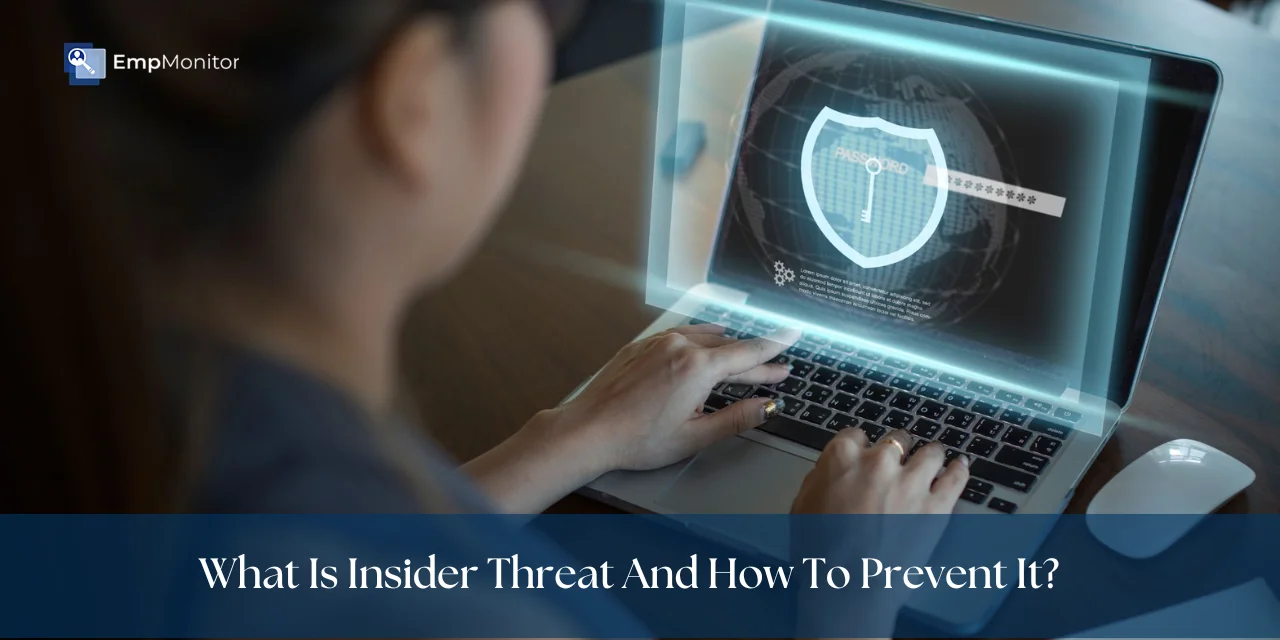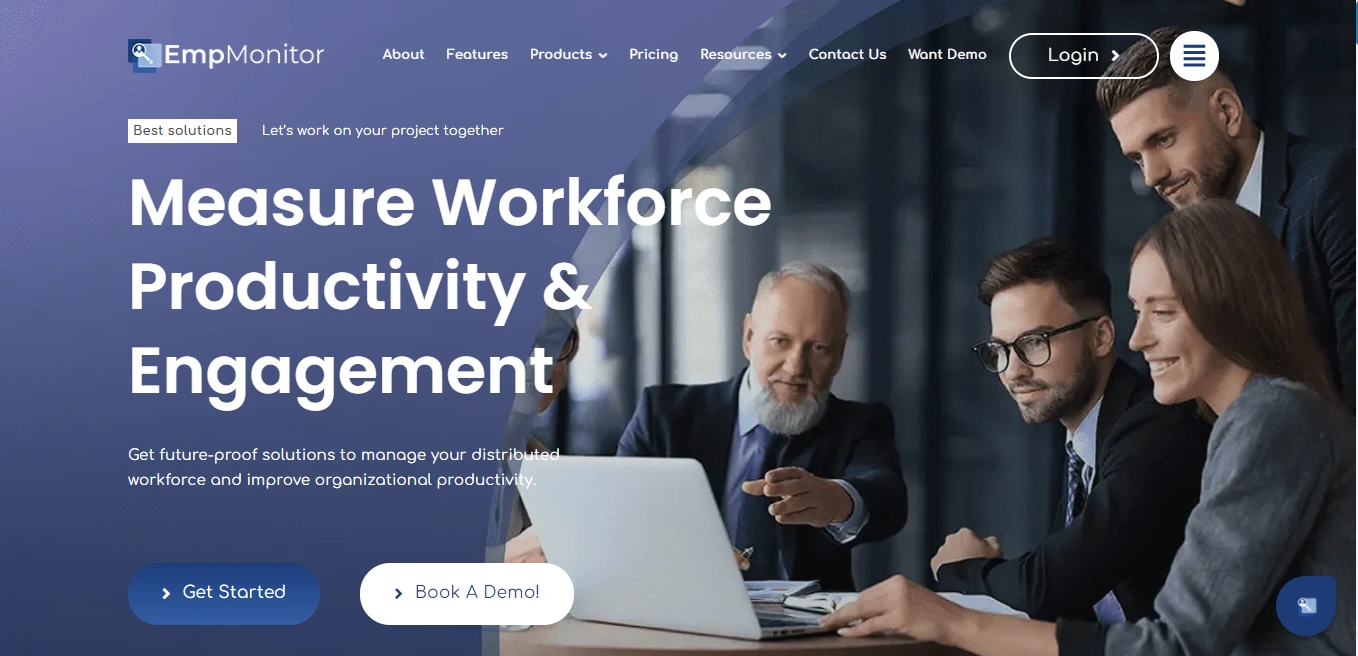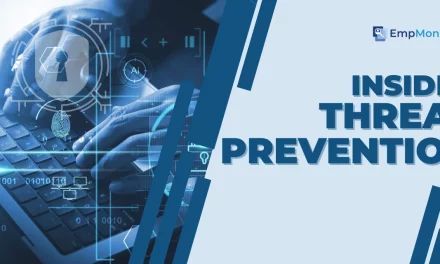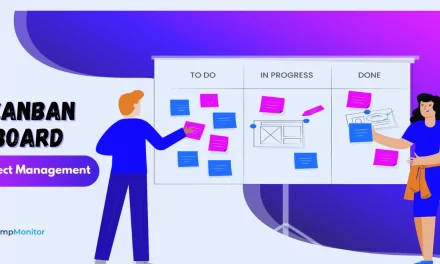A staggering 80% of organizations have experienced an insider attack in the past year alone. This alarming trend underscores the critical need for robust insider threat neutralization strategies in the competitive business arena.
As businesses increasingly rely on digital systems and remote work setups, the risk of internal breaches- intentional or accidental—has never been higher. The repercussions of such violations extend far beyond financial loss, impacting reputation and trust.
In this blog, we delve into effective strategies and tools to empower managers like you to protect your organization’s sensitive data from within. We will also learn how proactive measures can transform your workforce into a resilient line of defense against threats.
In a hurry? Listen to the blog instead!
What Does Insider Threat Mean?
A harmful operation carried out against an organization by its own working individuals who have authorized access to its records, apps, or network is known as an insider risk or threat. These users may be third parties with access to the company’s digital or physical assets, such as partners, contractors, or temporary workers, in addition to existing or past employees.
They might even manifest as hacked service accounts. Although the phrase most frequently refers to illegal or criminal activities, one can also characterize users who inadvertently damage a business.
Let’s take an example of Insider Threat to understand it better.
Consider a scenario where an employee, disgruntled over a denied promotion, accesses, and leaks sensitive client data to competitors, causing significant damage to the company’s reputation and financial standing.
Such threats highlight the urgent need for organizations to implement stringent security measures and cultivate a culture of vigilance among employees.
Now, that you know the meaning of threat, let’s understand various kinds of threats.
What Are The Different Types of Insider Threats?
Understanding various kinds of threats is equally important to prevent and manage insider threat. Here are the major types that every organization should be aware of:
Malicious Insider
This kind of threat is done by an employee or contractor who attempts to steal data or compromise systems. It can be a shady character seeking to harm a company, punish, or disgrace their boss, or it can also be an opportunist seeking to steal knowledge that they can sell or use to further their career.
The numerous Apple engineers accused of data theft for obtaining secrets about driverless cars for a Chinese company are prime examples of malevolent insider threats.
Careless Insider
A worker who disregards appropriate IT protocols comes under this threat. As an illustration, consider someone who uses their computer and then logs off or an administrator who neglects to install a security patch or changes the default password.
One instance of a careless insider is the data analyst who, without permission, removed a hard drive containing personal information belonging to 26.5 million United States military veterans from a house break-in.
Insider Compromise
A threat compromise occurs when an authorized individual intentionally or inadvertently misuses or gains improper access to sensitive information or systems within an organization.
An employee whose PC has malware on it is a typical example. Usually, phishing scams or clicking on websites that download malware are the causes of this insider threat. To help prevent such infections and maintain system health, tools like cleanmymac can be used to scan for and remove malware effectively. Cybercriminals may utilize compromised insider computers as a “home base” to scan file shares, increase privileges, infect additional systems, and a few more activities.
As was the case with the most recent Twitter hack, perpetrators obtained employee login credentials and internal network access using a phone spear phishing assault. The attackers obtained details about Twitter’s workings and identified staff members accessing account assistance tools.
It allowed them to compromise well-known accounts and disseminate a $120,000 Bitcoin hoax.
Collusive Threats
Collusive threats involve insiders cooperating with external partners to compromise their organization. Often, this collaboration includes cybercriminals recruiting employees to steal intellectual property for financial gain.
Third-party Threats
Third-party threats involve security risks originating from external entities such as business partners or contractors who, intentionally or unintentionally, compromise the organization’s security protocols. These risks can manifest through actions that either disregard security best practices or actively seek to exploit vulnerabilities within the organization’s systems or data.
How Serious Is Insider Threats Issue?
A recent report demonstrates that threats are becoming a huge issue. Here are the main problems caused by it:
- More than thirty insider-related occurrences occurred annually in 60% of the organizations.
- It was found that more than 60% of insider-related occurrences are because of the negligence of employees.
- There were also criminal insider reports showing that above 20% of insider-related occurrences are related to that.
- Another problem is user credential theft, as it was identified as the cause of 15% of insider-related occurrences.
In just two years, insider-related occurrences rose by 47%. Because the threat actor has authorized access to the organization’s systems and data, insider threats are challenging to identify.
People need access to tools like email, cloud apps, and network resources to perform their jobs well. Certain employees may also require access to private data, such as financial records, patents, and customer information, as per their position.
Since the threat actor has authentic credentials and access to the organizational systems and data, a lot of security products would classify the behavior as typical and not raise the alarm.
The more complex threats are, the more difficult they are to identify. A threat actor might, for instance, travel laterally to evade detection and get access to important targets.
Let’s understand how employers and managers identify threats.
How Can Managers Identify Internal Threats?
Insider risks pose significant challenges to organizational security and operational integrity. Understanding these issues is crucial for implementing effective mitigation strategies. The major symptoms associated with insider threats in cyber security include:
Behavioral Indicators of Threats:
Here are some common insider threat indicators that will help you identify internal cyber threats:
- Interest outside the scope of their duties
Employees showing a significant interest in areas unrelated to their job responsibilities may be gathering information for personal gain or external parties.
- Working unusual hours without authorization
Employees working outside regular hours without proper authorization might indicate unauthorized access to systems or data.
- Excessive negative commentary about the organization
Continuous negative remarks could suggest dissatisfaction or potential intent to harm the organization’s reputation or operations.
- Drug or alcohol abuse
Substance abuse can impair judgment and compromise decision-making, potentially risking security protocols or sensitive information.
- Financial difficulties or gambling debt
Employees facing financial strain might be susceptible to bribery or extortion, making them more likely to engage in threats, and some may attempt to consolidate debts to manage the pressure.
- Change in mental state
Significant variations in mental health or behavior may affect an individual’s reliability and judgment, potentially leading to security breaches or data leaks.
Organizational Events Linked to Insider Threats
These events often coincide with observed behavioral traits:
- Layoff: Employees facing termination might feel disgruntled or seek revenge by compromising security or stealing data.
- Annual merit cycle (not promoted or given raises): Disappointed employees might retaliate or seek unauthorized access to sensitive information.
- Performance improvement plans or workplace harassment complaints: Individuals under scrutiny might act out of desperation or frustration, compromising security.
Suspicious Security Events Indicating Threats:
- These events raise red flags for potential threats
Badging into work at unusual times: Accessing premises outside regular working hours could indicate unauthorized activities.
Logging in at unusual times or locations: Accessing systems or networks during off-hours or from unusual locations may indicate unauthorized access or compromised credentials.
Accessing systems or applications for the first time: A sudden need to access without legitimate reasons might suggest unauthorized intent and cause an insider threat.
- Copying large amounts of information
Unauthorized copying or transferring of significant data volumes could indicate data exfiltration or theft.
Organizations can detect threats early by monitoring these behavioral traits and security events. Early detection allows for proactive intervention, minimizing risks associated with data breaches, operational disruptions, or other malicious activities perpetrated by insiders.
How Can Managers Prevent Threats?
After your insider threat detection stage, you can follow the below threat prevention strategies.
-
Educate your workforce
Regularly provide anti-phishing instruction. Submitting phishing emails to users and concentrating training efforts on those who fail to identify the emails as fraudulent attempts is the most efficient approach for the organization. By doing this, managers can decrease the number of workers and contractors who can become insiders.
Employers can also teach staff members to recognize unsafe peer behavior and report it to IT security or HR. Managers can stop malicious threats by an anonymous tip about a disgruntled employee.
-
Assemble a team to seek threats
Numerous businesses maintain specialized danger-hunting teams. Insider Threat hunting has a proactive stance as opposed to responding to events after they find them. Devoted members of the IT security team keep an eye out for warning indicators, like the ones mentioned above, to spot theft or disturbance before it happens.
-
Take advantage of behavioral analytics for users.
User and Entity Behaviour Analytics (UEBA), commonly known as User Behaviour Analytics (UBA), is the process of monitoring, gathering, and evaluating machine and user data to identify potential security risks inside an enterprise.
UEBA distinguishes abnormal behavior from normal behavior using a variety of analytical techniques. Usually, this is accomplished by gathering data over time to identify typical user behavior patterns and then highlighting actions that deviate from those patterns.
Unusual online activities, such as the misuse of credentials, strange access patterns, and massive data uploads, are frequently recognized by UEBA as warning indicators of insider threats. More significantly, before attackers gain access to vital systems, UEBA can often identify these peculiar behaviors among compromised insiders.
-
Sync up HR and IT security.
Tales of IT security teams who were caught off guard by layoffs abound. IT security can help you prepare with the head of HR and the CISO working together. Managers can neutralize many dangers by placing affected employees on a watchlist and monitoring their behavior.
Similarly, HR may notify IT security about certain workers who didn’t receive a raise or were passed over for a promotion. Data loss prevention (DLP) tool tuning with active consideration and input from HR may also provide an early warning sign of self-harm and establishment dissatisfaction.
Implement robust security protocols, and utilize workforce management and monitoring software like EmpMonitor to enhance detection capabilities and mitigate threat risks effectively.
How EmpMonitor Help in Insider Threat Prevention?
EmpMonitor helps in threat prevention through features that provide comprehensive visibility and control over employee activities. Here’s how it works:
AI-Powered Insightful Reports
EmpMonitor’s AI-powered insightful reports offer a cutting-edge solution for insider threat prevention. It analyzes employee behavior patterns and identifies anomalies, these reports provide employers with crucial insights into potential security risks.
This system continuously monitors data access and usage patterns, detecting any irregularities that may indicate an insider threat. This proactive approach allows employers to identify employees who might pose a data security risk and take preventive actions to safeguard their organization.
With EmpMonitor’s advanced AI capabilities, organizations can ensure robust data security, protecting sensitive information from internal threats while maintaining a secure and productive work environment.
Screenshot Capturing
EmpMonitor’s Dynamic Screenshot Monitoring acts like a digital watchdog, capturing screenshots at both random and fixed intervals. This feature helps detect suspicious activity and potential data leaks by monitoring unauthorized access attempts, sensitive data displayed on screen, and signs of insider threats attempting to steal information.
This comprehensive employee monitoring software not only enhances data security but also supports privacy regulations, making it an essential asset for safeguarding sensitive information within any organization.
Keystroke Logging
By recording keystrokes, EmpMonitor can detect any unusual or unauthorized data entry. It is beneficial for identifying attempts to access sensitive information or execute unauthorized commands.
Browser History
EmpMonitor’s Browser History Records feature enhances insider threat prevention by meticulously tracking and logging all websites visited by employees.
This allows employers to monitor for visits to unproductive or potentially harmful websites, which could indicate attempts to access unauthorized information or leak sensitive data.
Thereby it helps employers in identifying suspicious employees’ behavior early, enabling timely intervention to mitigate risks and protect the organization’s data integrity.
Web/Application Usage Monitoring
This feature of EmpMonitor allows continuous tracking and analysis of employees’ web and application usage. It identifies patterns and detects unauthorized access to sensitive data that may indicate potential security risks and inappropriate use of company resources, flagging activities that deviate from normal behavior.
Employers can block access to unproductive or malicious websites and applications, reducing the risk of data breaches and ensuring that employees remain focused on their work. This proactive approach not only helps in identifying and preventing insider threats but also boosts overall productivity by minimizing distractions.
Data Loss Prevention
If you are still not sure about data transfer happening in your organization, this Data Loss Prevention (DLP) feature could be a great help. This feature allows you to detect and identify unauthorized attempts to access or share sensitive information.
The DLP system detects anomalies in data usage patterns, alerting employers to potential insider threats. This proactive approach allows organizations to swiftly intervene and prevent data breaches, ensuring the protection of valuable information and maintaining a secure work environment.
Remote Monitoring
EmpMonitor’s remote monitoring feature allows employers to oversee employee activities from any location. This includes tracking productivity, website usage, and application usage in real time.
Getting detailed insights and reports, employers can ensure that work standards are maintained, even with remote or hybrid work setups. This capability enhances operational efficiency, ensuring that employees remain focused and productive regardless of their physical location.
Stealth Mode Operation
EmpMonitor’s Stealth Mode operates discreetly, running invisibly on employee devices to prevent detection. This feature is crucial for insider threat prevention as it ensures that monitoring activities are not easily bypassed by potential malicious insiders.
This feature allows employers to activate hidden surveillance, which helps in identifying if any employee is doing something that may risk organization data. Without alerting such insiders, EmpMonitor could help you to prevent and mitigate such risks effectively and safeguard the organization’s sensitive information.
Alert and Reporting System
This alert and notification feature plays a crucial role in insider threat prevention. This feature continuously monitors employee activities and instantly sends alerts when suspicious behavior is detected.
By setting up customized rules and thresholds, employers can receive real-time notifications about unauthorized access attempts, unusual data transfers, or any deviation from regular work patterns.
For example, Suppose you have set a rule regarding file transfer anomalies and an employee tries to access restricted files or transfers large amounts of data to external drives, EmpMonitor immediately sends an alert to the designated personnel. This rapid response capability allows organizations to quickly investigate and address potential threats before they escalate.
The system also provides detailed reports on the triggered alerts, enabling a thorough analysis of the incidents. By proactively identifying and mitigating risks, EmpMonitor’s alert and notification system ensures robust data security and helps protect the organization from internal threats.
Read More
Insider Threat Example: Spot Potential Risks And Mitigate
11 Strategies You Need To Know For Effective Insider Threat Prevention
How To Create An Effective Insider Threat Management Plan: 10 Steps
How Employees Become Compromised?
Employees can become compromised insiders through several means:
- Phishing is a cybercrime where a target is contacted via email or text by someone pretending to be a legitimate institution. The goal is to trick the individual into providing sensitive information such as personally identifiable information (PII), banking details, and passwords. Some phishing schemes may also entice the target to click on a link that downloads malware causing insider threats.
- Malware infection occurs when a computer is infiltrated with malicious software. The objective of the malware in the context of a compromised insider is to steal sensitive information or user credentials. You can initiate it by clicking on a malicious link, downloading an infected file, or using a compromised USB device, among other methods.
- Credential theft involves stealing a person’s username and password. You can accomplish this through various methods, including phishing and malware infections. Another common technique is social engineering, where criminals deceive individuals into revealing their credentials. An example is a fake call from IT support asking the user to confirm their username and password.
- Pass-the-HashPass-the-hash is an advanced form of credential theft. Here, the hashed (encrypted) authentication credential is intercepted from one computer and used to access other computers on the network. Unlike traditional password theft, pass-the-hash attacks steal and reuse password hash values rather than the actual plain text passwords, often during Remote Desktop Protocol (RDP) sessions.
The Bottom Line
Insider threats significantly risk organizations, causing financial, operational, and reputational damage. Understanding how employees become compromised by various means is crucial. Mitigation requires a multi-layered security approach, including robust training, strict access controls, real-time monitoring, and advanced threat detection.
Tools like EmpMonitor are essential, offering comprehensive visibility and control over employee activities to identify and respond to potential threats swiftly. It fosters a culture of security awareness and vigilance, combined with the right technological solutions, which will reduce threat risks and protect sensitive data.
Preventing threats hinges on technology and a security-conscious environment where every employee understands their role in organizational protection.
FAQs
Q: What Are Insider Threat Indicators?
These threats are a significant concern for organizations of all sizes. Clear warning signs include unusual login patterns, unauthorized application access, abnormal employee behavior, and escalated privileges.
Q: Is insider or internal threat considered a vulnerability?
Over 34% of global companies experience internal threats annually, costing an average of $8.76 million per company. Insider threats and attacks are cyber risks originating from within an organization.
Q: What does the insider threat policy entail?
Internal threat programs aim to prevent personnel from becoming threats from within, identify insiders posing risks to organizational resources such as classified information, personnel, and facilities, and manage these risks through early intervention and proactive reporting and information referral. Policies like clear desk policy is a structured approach to protecting sensitive data and ensuring a secure work environment.
Q: Where should I report inside or internal threats?
To self-report, reach out to your agency’s security office. Remember, reporting rules are the same across all federal agencies, ensuring a unified approach to managing potential threats. Taking action promptly helps safeguard our organization’s security.















